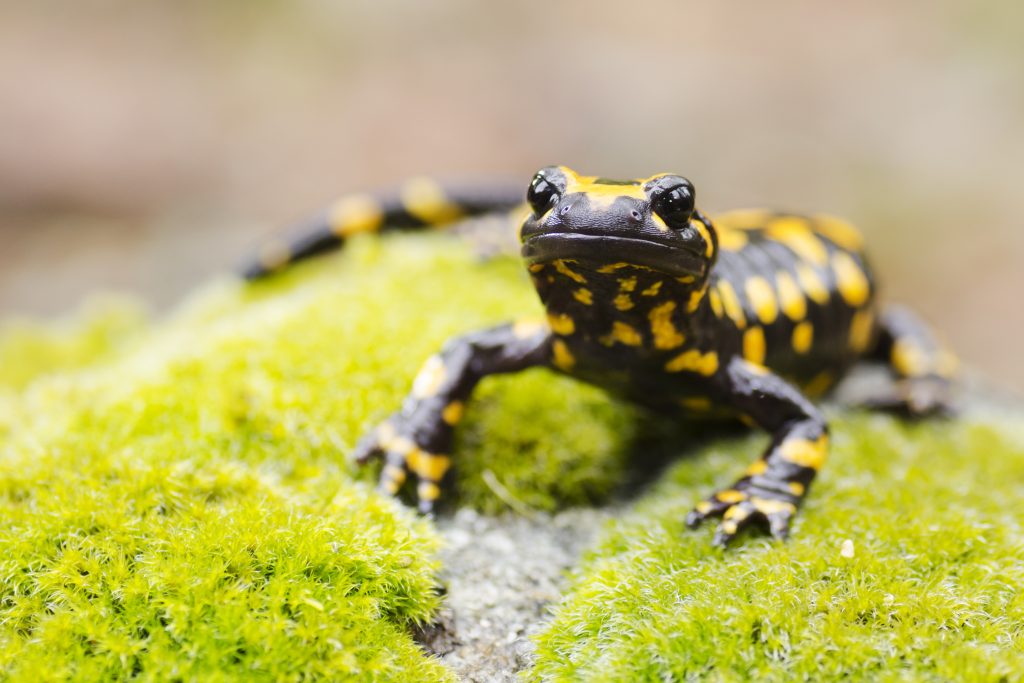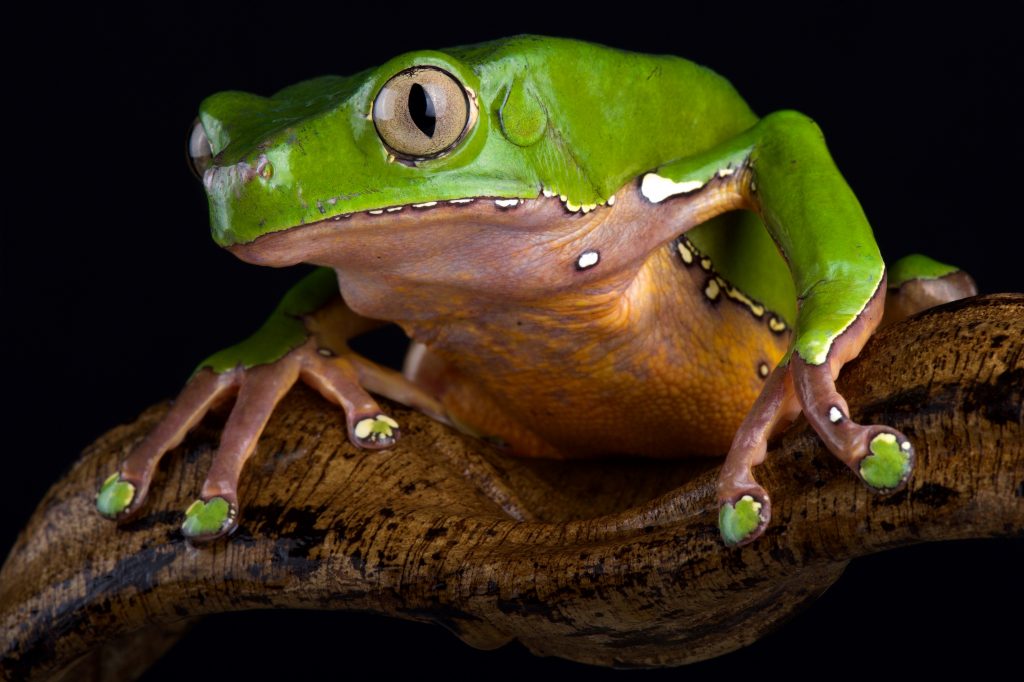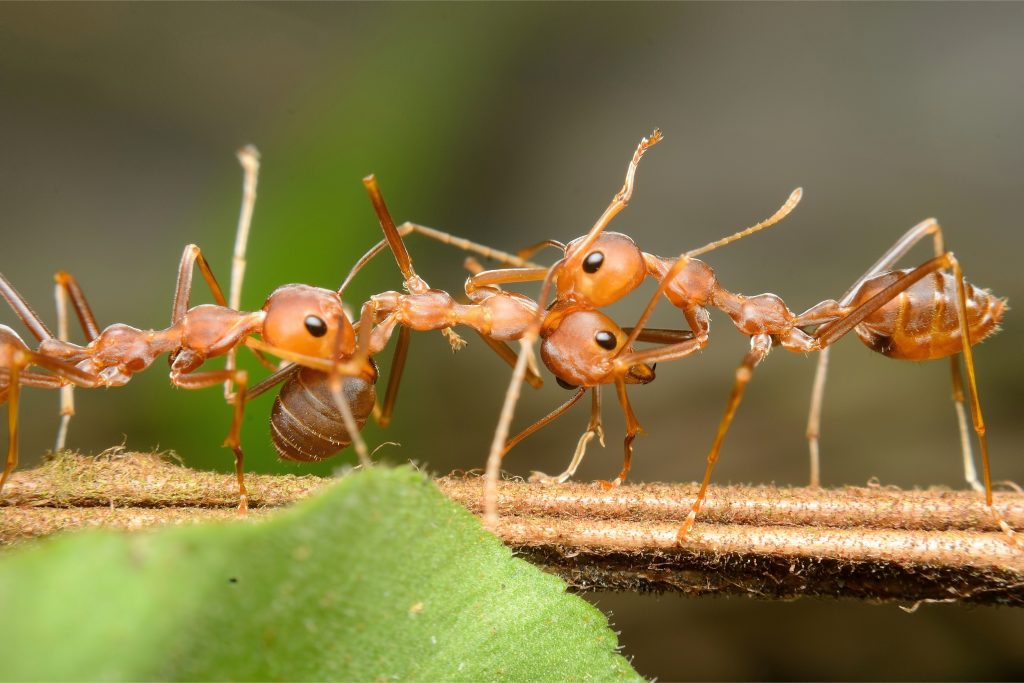We’re a curious species. And we like to do things that make us feel good. Put those two attributes together and we’re a species that’s curious enough to find new things to make us feel good. Even when those things come from odd places. We know of tons of plants and other substances that can change the way we feel, but that’s pretty standard. What’s less standard and more ethically debatable? The idea that some animals can also get a person high.
Whether you’re picking certain flowers or mushrooms, or letting a snake bite you, there are tons of ways to have a psychoactive experience in nature. Welcome to our independent news publication; which specializes in cannabis and psychedelics reporting. Stay up-to-date by subscribing to The Cannadelics Weekly Newsletter, and make sure you’re first in line when product promotions become available.
Psychedelic toads
One of the best examples of animals that can get you high, are psychedelic toads. Psychedelic toads are toads that contain chemicals called bufotoxins within glands in their skin. These bufotoxins are known for containing 5-MeO-DMT, a name that should sound familiar. This compound is another form of the DMT found in plants like Psychotria viridis which is one half of ayahuasca.
DMT is a hallucinogenic compound that’s found in plant genera like Phalaris, Delosperma, Acacia, Desmodium, Mimosa, and Virola, as well as in the leaves of more ordinary citrus plants. DMT is also found in some sea sponges, like Smenospongia aura, S. echina and Verongula rigida, but is most well-known, in toads like Incilius alvarius (sometimes incorrectly called Bufo alvarius), also known as the Colorado River Toad and Sonoran Desert Toad. This particular toad originates in Northern Mexico and the Southwestern US. There are also a number of psychedelic fish, some of which may or may not be related to DMT.
Though the toads don’t need to be killed to access the venom, which is released upon excitation of the toad, they often are. This becomes an issue with the practice in that it threatens the lives of the animals. Technically, the toads can simply be excited and the venom collected, but their killing is an unfortunate aspect of getting high off a living thing.
Using toads to get high isn’t a new invention, even if its gaining popularity today. The practice goes back as far as the Olmec period in pre-Columbian era Mesoamerica, from around the years 1,200 BCE to about 400 BCE. DMT trips are short, lasting from just a few minutes to an hour and a half. When mixed with Banisteriopsis caapi (caapi vine), DMT breaks down much slower due to the presence of MAO inhibitors, and trips last for many hours. This mixture is called ayahuasca. DMT is under investigation for its medical value, and is undergoing trials currently for depression.
Fire salamander
When it comes to animals that get you high, most seem to be in the slippery skin category, although how they get you high varies between animal species. Plenty of creatures can bring on a psychoactive reaction without the help of DMT. Take the fire salamander, Salamandra salamandra. This species is quite common in parts of central Europe, and is usually seen as a black salamander, with spots or stripes of yellow.
Fire salamanders produce an alkaloid called samandarin, which for humans and all vertebrate animals causes muscle convulsions, hypertension, and hyperventilation. Samandarin comes from a family of compounds called samandarines, which are effective through transdermal uptake, or which can be taken orally. What starts as a restless reaction, progresses to convulsions, paralysis, and even death within a few hours, if the right amount is taken. Poisonings are generally characterized by internal hemorrhaging. These salamanders can produce a range of other toxins as well. Another main one is tetrodotoxin, a sodium channel blocker, which prevents nervous system messages from getting through, therefore keeping muscles from working correctly.

If this all sounds not super awesome, there is folklore around the compound which says it has hallucinogenic effects and is a strong aphrodisiac. While these claims are often dismissed, there are overlapping stories of the compound being used in salamander brandy (which is actually schnapps), a drink native to the country of Slovenia. However, it didn’t become a part of conversation until a 1995 article by a gay named Blaz Ogorevc, which described the process of making brandy with the creatures. According to a 2003 article entitled Salamander Brandy: “A Psychedelic Drink Between Media Myth and Practice of Home Alcohol Distillation in Slovenia, salamanders were indeed used for brandy making, but only as a cheaper method to make it, which was looked down on by the general population. While it is known to cause effects, these effects don’t sound very psychedelic.
This idea was echoed in another place. A Cracked writer might have done the most to understand the situation, traveling through Slovenia, and then making the brew himself at home upon not finding the real thing in his travels. He described the process of procuring a salamander, milking it for secretions for a period of time, and then adding it in during the fermentation process to make brandy. In the end he described a powerful drunken high, in line with many of the stories he was told, but not quite in line with a powerful psychedelic aphrodisiac experience. He said he was repeatedly told that it “takes the legs out from under you”, and described an experience that included difficulty in standing and walking, likely a result of the neurotoxins.
The banning of the drink (if it actually is) could be to preserve the animals from getting killed, but it could also hark back to the older back hills tradition of using salamanders and their poison to make a cheaper form of brandy, which apparently made people sick quite often, and which is/was associated with being a lower class cheat. In fact, I find that the much more plausible answer, as it is a poison that causes some kind of effects, and humans have been known to play around with such poisons all throughout history.
Hallucinogenic fish
Next up we’ve got hallucinogenic fish (dream fish), like Sarpa Salpa of the sea bream variety. Interestingly, what it is that they contain is not well understood, but it can apparently cause a trip similar to LSD, according to some. Others say that effects are much more like deliriant hallucinogens, which are more likely to cause delirium (mental disruption and confusion) than hallucinations. Sarpa salpa and other similarly acting species are found in coastal areas, particularly close to Spain, and sometimes around Britain. In Arabic these fish are known as the ‘fish that makes dreams’, though the term ‘dream fish’ is used for a number of different fish that all lead to ‘ichthyoallyeinotoxism’. This term is associated with intoxication from consuming fish, and most come from the genus Kyphosus.
Some researchers think the psychedelic effects have to do with macroalgae that accumulates from what the fish eat, and that its not produced by the fish themselves. It has not been ruled out that DMT is responsible in some cases, with German anthropologist Christian Rätsch describing how several reporters have eaten these dream fish, and subsequently experienced intense hallucinations.
Other fish species eyed for possibly causing psychedelic effects include the sea chub, though its unclear once again if the toxins from the fish come directly from the fish, or the algae that it eats. Siganus spinus is another possibly psychedelic venomous fish, nicknamed ‘the fish that inebriates’, and Mulloidichthys flavolineatus called the ‘the chief of ghosts’, is found around Hawaii. Yet another grouping of hallucinogenic fish, represented by Tetraodontidae, includes the likes of puffers, blowfish, toadfish and bubblefish, all of which contain the neurotoxin tetrodotoxin.

Snake venom
Some animals we don’t necessarily think of trying to kill us, like toads, even though technically the venom is a self-defense measure. For smaller animals it means death, whereas to humans it might mean tripping out. Other animals though, we are wary of, because we know they have the strength to kill us. Such is the case with many species of snakes, some of which are capable of killing a human being pretty fast. However, as with the case of many plants, just because something can kill us at some level, doesn’t mean it can’t make us high on another. Such is the case with snake venom, though it extends to the use of scorpion venom and wasp venom as well.
Medically there are not many cases to go off, and the method for getting high is primarily used by opioid addicts. In one account by scientists from the Post Graduate Institute of Medical Education and Research’s Drug Deadiction Center in Chandigarh, India, two users hooked on cobra venom, were getting their jollies by allowing the snakes to bite them on the tongue! They were both opioid addicts of at least 15 years, and stated that the high lasted close to a month. The case was published in a study called: Snake Venom Use as a Substitute for Opioids: A Case Report and Review of Literature.
According to that report, “the snake bite was associated with jerky movements of the body, blurring of vision, and unresponsiveness, i.e. “blackout” as per the patient for 1 h. However, after waking up he experienced a heightened arousal and sense of well-being, which lasted for 3–4 weeks…” The subject also said that the practice was common for where he came from in India (Northwestern Rajasthan).
The report also pulled from a few other cases, all presenting in India, and all dealing with recreational snake bites, mostly with opioid addicts. Cobras, kraits, and other green tree snakes were mentioned for this use, and one patient told of ‘snake dens’ where snakes were graded based on the level of intoxication of their venom. Besides the tongue, patients reported getting bites on the feet as well. Venom intoxication is described as promoting “happiness, grandiosity, and excessive sleepiness”, and from the report, evidence points to higher socioeconomic classes partaking in this activity.
In terms of how the venom works, while its not entirely understood, “it is known that some of the neurotoxins result in an analgesia, which is independent of the centrally mediated opiate-independent analgesia. Long-form of alpha-neurotoxin found in cobra venom is known to act on nicotinic acetyl choline receptors (nAChRs). These possibly act through the acetylcholine receptors and can substitute morphine and mitigate opioid withdrawal.”
Tree frogs
When looking into psychedelic toads, it becomes clear that this has to do with toads and not frogs, but this doesn’t mean that their slippery counterparts won’t also get a person high. In fact, such is the case with tree frogs of the Phyllomedusa genus, which have been getting people high for possibly centuries. These frogs are mainly found in South America, particularly in the Amazon rainforest.

The frogs produce a wax secretion that they use to keep from drying out, and rub all over their skin for this purpose. The species Phyllomedusa bicolor (also called the giant leaf frog) is the most well-known, and has been used in natural medicine traditions and by shamanic hunters in a practice called the ‘Kambo cleanse’. Hunters go as far as to say it temporarily heightens their senses.
The compound in these secretions is called dermorphin, a natural opiate which binds strongly to mu Opioid receptors, and is reportedly 20-30 times the strength of morphine, but without the same level of addiction ability. This compound is not found in mammals, but can be found in certain other bacteria, amphibians, and molluscs. Dermorphin is a potent pain killer, with illegal use tied to racehorses, where its ability to dull pain can enhance horse performance. Why we aren’t using this, rather than more addictive opioids which are causing massive issues with addiction and death, is certainly a question that should be investigated further.
Ants – Animals That Get You High?
While most people think of ants as an irritation they’d prefer not to have in their house, others consider ants as interesting creatures. They behave in well organized ways, working together to construct and maintain intricate structures and tunnels, and have a fine-tuned ability to communicate together. They manage to avoid drowning in rain storms, are known for carrying many times their own weight, and in the right circumstances can make you trip your head off.
Different cultures describe experiences of hallucinogenic encounters with ants, particularly in shamanistic rituals or natural medicine traditions. Some Native Americans in the US had rituals which involved things like fasting for three days from food, water, and sex, and then consuming harvester ants to induce hallucinations. It was also written of eating patches of eagle down which were moistened, and stuffed with about five ants each. These were eaten until the eater’s face turned red, and they couldn’t eat more. This kind of consumption went on through the late 1870s and was associated with as many as 17 indigenous groups, however it died out since that time.
Though ants are very small, consuming large amounts can have an effect. Native Americans in South central California ate Red Harvester ants, that contain a venom full of proteins, histamines and other reactive chemicals. The venom of these ants is said to be as much as 10 times that of honeybees, and the amounts taken were equivalent to 35% of a lethal dose for a 45.5kg (100lb) person.
Most of the stories involving ants include a fast period, or sleep deprivation period, beforehand, and the use of other psychotropic substances like Datura, a poisonous flower. It could be that the toxins had a better chance of working on a very empty stomach, or in stressed conditions. Though these ants are said to possibly cause mild-altering effects, hallucinations, and catatonic states, the end result seemed dependent on several different factors.

Animals That Get You High – Conclusion
There are a lot of substances with psychoactive properties, and most of them aren’t well-known. In terms of animals that can get you high, while there are plenty of options, it must always be considered that 1) we don’t know everything and there’s often a fine line between getting high and death, and 2) these are living things that can feel pain and fear, and arguably shouldn’t be used solely to get a person high.
However, issues of morality aside, it’s quite interesting that the body of one animal can cause such highs in another. While I personally believe we should be conscientious in how we treat other living animals, it certainly opens a door of possibility that such compounds are created by other living beings.
Hello all! Welcome to CBDtesters.co/Cannadelics.com, your #1 internet platform for well-rounded independent news coverage of the cannabis and psychedelics fields. Come by every day to stay up-to-date on all related topics; and subscribe to The Cannadelics Weekly Newsletter, so you know everything important going on.









